I have wanted to build a model in Hellenic Air Force colors for a long time. They have a very interesting collection of aircraft types to choose from, and the Mediterranean sun gives some interesting weathering challenges to the modeler. I had an F-86D Sabre in my stash, which had some interesting paint schemes available. I like building Revell and Monogram models, but I was surprised to find that the molding in this kit is a cut above the usual that you might expect from the old Revell kits. The surface of the model featured finely cut panel lines and rivets, and was full of some finely detailed parts. It also included a really nice pilot figure, but I looks like his gear might be from the early Korean
conflict ear and might be a little dated for the late model F-86D.
-
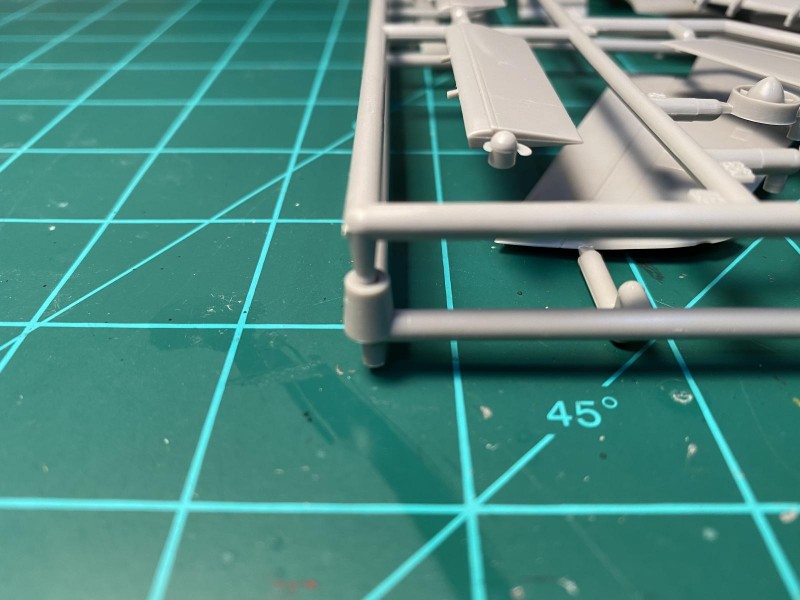
1. Nested sprues. Pretty cool.
The cockpit, in particular, looked like it would be a realistic representation of the real thing (if my skills could keep up with it). I was also pleasantly surprised to find that I had purchased the Eduard photoetch set and masking when I first bought this kit. It appears that this kit came out in 2000 or 2001, so the kit and Eduard goodies were only 20 years old. The kit decals looked like they are in pretty good shape and very complete, but I sourced some HAF decals from Hannants in England.
-
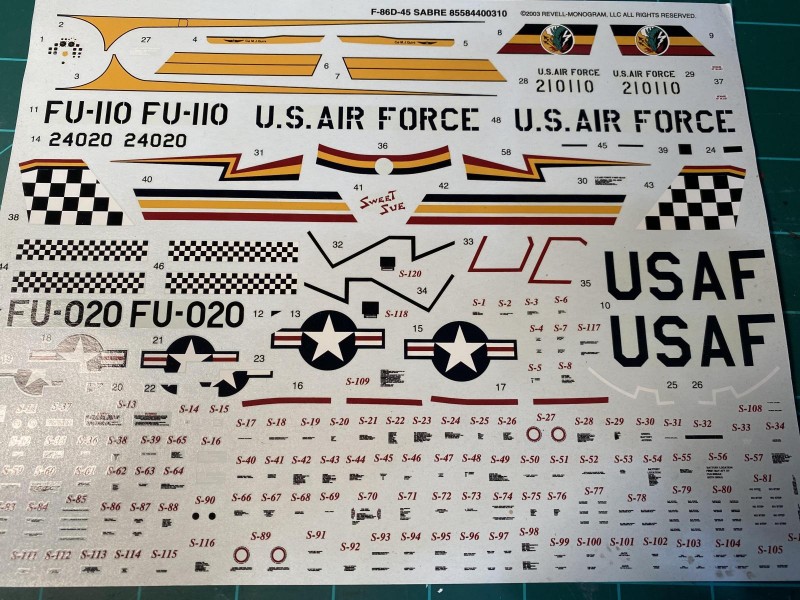
-
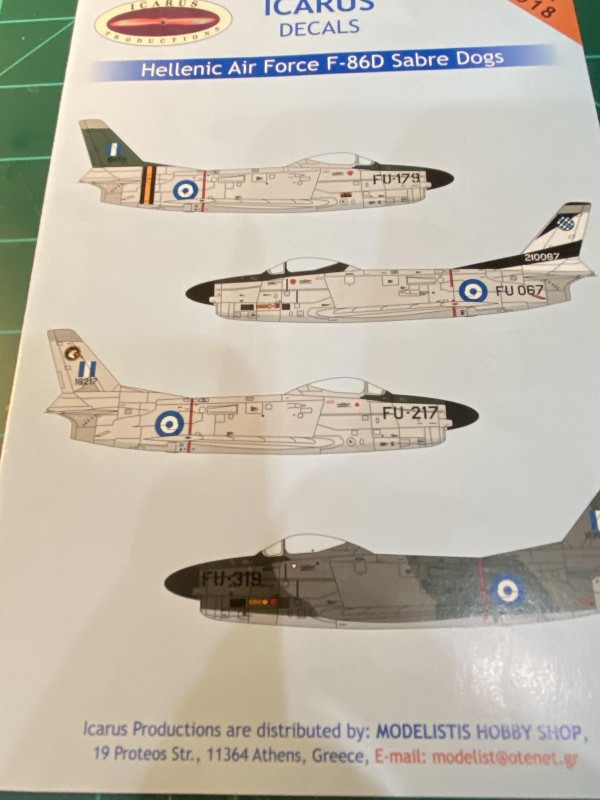
-
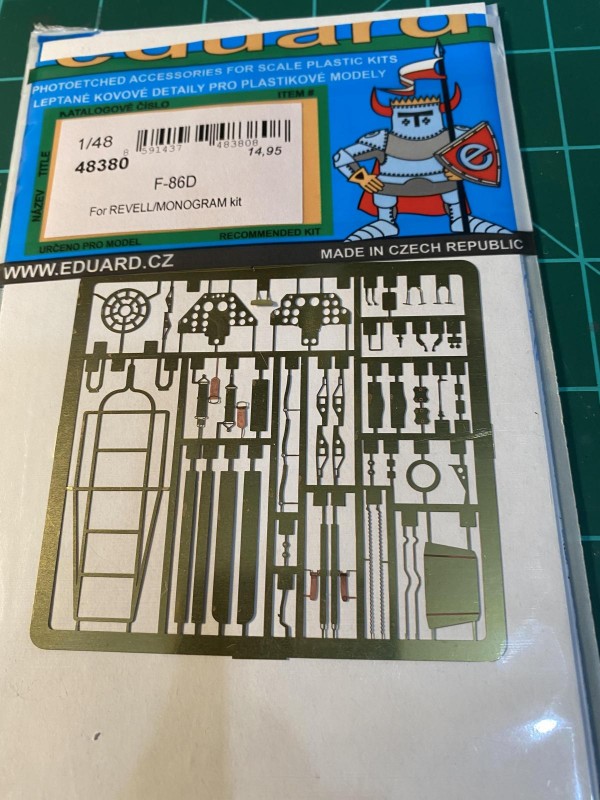
I first had to do a little research on the plane's history and some paint schemes in the Hellenic Air Force. The F-86D is descended from the F-86 Sabre used so brilliantly in the Korean Conflict. The Sabre was a great dogfighter, but it was effective only in daytime and clear weather. The Air Force wanted an all-weather interceptor that was also effective at night, and settled on the F-89 Scorpion. When it became obvious that the F-89 was going to take a while to perfect, the Air Force approached North American aviation and asked them to build a an interim interceptor based on the F-86. By the time they were done, the F-86D was almost a completely new airplane. Not only was it an all-weather interceptor, but it was also the first American interceptor that carried only missiles as an armament. Although the F-86D had a fairly short service history with the regular Air Force, it lasted longer in the Air National Guard and in several foreign air forces.
From here I started searching the internet for some good photos of the F-86D in Greek Service. The decals I had were for either an all-natural metal paint scheme or a "NATO" camouflage that consisted of gray and green over light gray. The problem was that most of the photos I found featured a camouflage that consisted of tan and green over light gray. It looked a lot like the SEA scheme used in Vietnam. I decided to contact Spiros Pendedekas (@fiveten) to see if he had any insight into the problem. He told me that apparently the HAF would take obsolete F-86D's, repaint them in tan and green, and park them on their airfields. This was apparently done to convince potential adversaries that they had new and different aircraft in their inventory. The photos of tan and green aircraft are either these repainted obsolete aircraft or museum aircraft, which seem to be all painted in tan/green. Spiros found some references that said that active duty F-86d's were either natural metal or gray/green. OK, problem solved...I'm going with the NATO scheme.
-

-
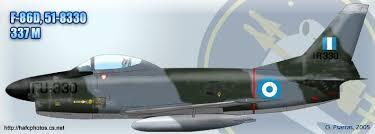
It was then that Spiros threw in the next problem when he asked if I knew that the Revell model was different than the one used by the HAF. He said that the F-86D's they used had a braking parachute that hung out in a housing in the tail. The Revell model doesn't have this parachute housing. Some more research and I discovered that all of the original F-86D's were built without the braking parachute. The long landing distance required by the jet necessitated a braking parachute, which was retrofitted to most of the F-86D fleet. The Revell model I had was an early version without the parachute housing. Once you have compared photos of early and late planes, it is very obvious that the housing is missing. I thought I might scratchbuild the housing, but the contours are complex and change the whole area under the rudder. While I was trying to figure out what to do, I decided to take a look at the Eduard photoetch. This set included a door for the parachute housing. I didn't think that Eduard would include a part for a feature that didn't exist on the kit, so I figured that Revell made a late model F-86D with the parachute housing.
This is where a week-long search for a late model F-86D kit by Revell. I tried all my online sources, and found a couple of late model F-86D's by other manufacturers, but they didn't appear to be as detailed as the Revell kit. I found dozens of Revell F-86D kits available on Ebay. It turns out there are 5 or 6 different releases of this kit, all with different artwork. Since the box doesn't tell you if it it a late or early version, you have to look carefully at the artwork to determine if the model has a parachute housing or not. I was on the third page of F-86D's on Ebay, when I found one whose box art looked like a plane with a parachute housing. The model had a reasonable price, so I decided to take a chance. Well, to make a short story long, the model arrived and had a parachute housing. Aside from that, the model appears to be exactly the same as my original kit.
-
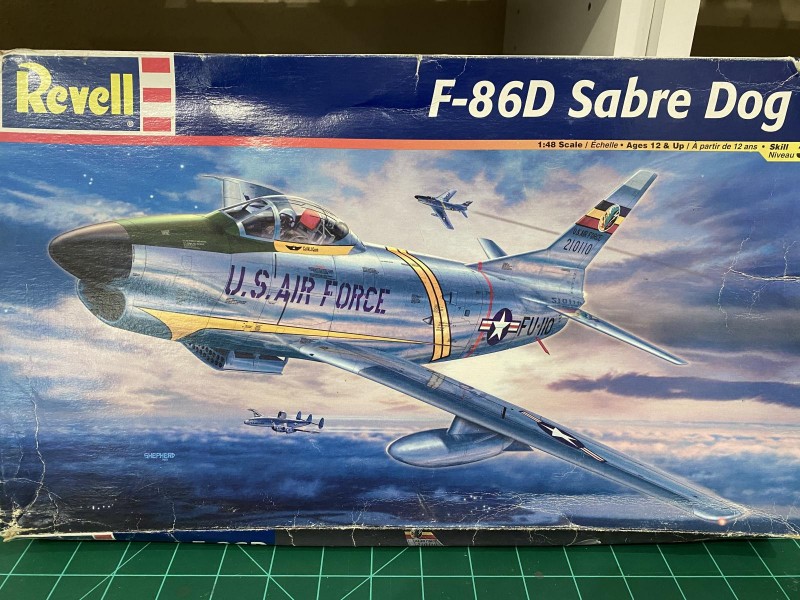
As you might guess, work started with the cockpit, which was very detailed and complete. When I looked at the Eduard cockpit parts, I was disappointed to find that the cockpit instruments, which are normally printed on clear acetate or film, was printed on paper in this photoetch set. I couldn't conceive of using them and getting the sort of results that I wanted, so I decided to use the kit parts for the instrument panel.
-
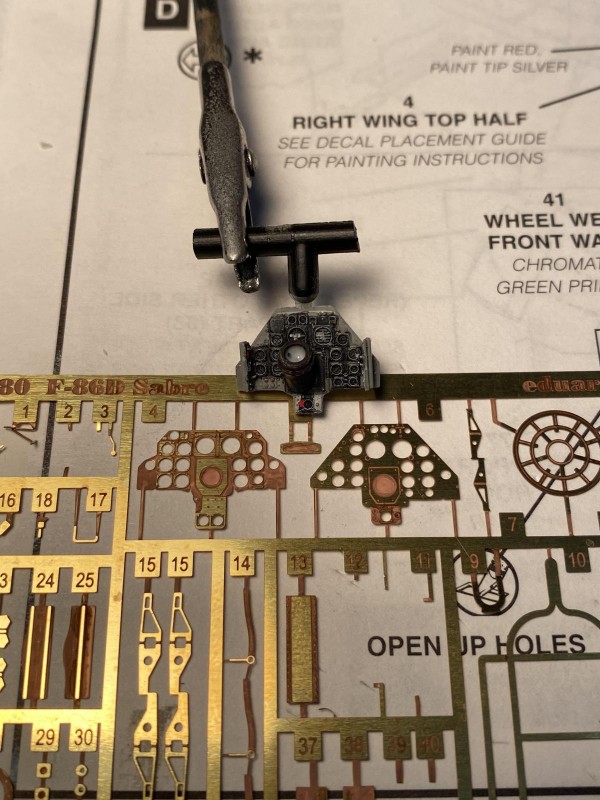
1. Decided to use kit instrument panel
This was going to be a big test for my sometimes shaky hands. So, I used a few of the smaller pieces of the photoetch set, including the seat belts, and built the cockpit. Using the photoetch seatbelts required me to remove the molded-on seatbelts from the kit seat, which left some hard-to-remove marks on the seat. I used some paper-thin plastic sheet to build a new back for the seat, and then used some putty to create a more textured seat bottom.
-
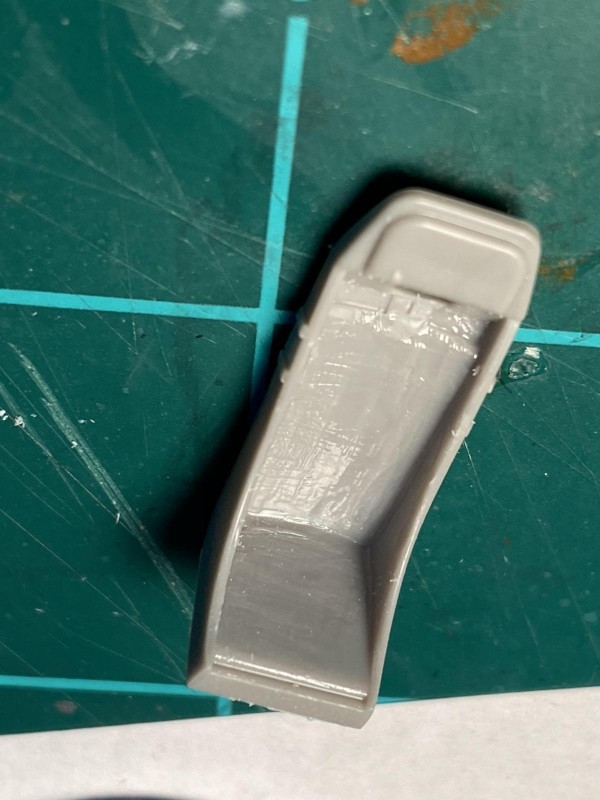
1. Eventually covered with thin plastic
Everything else was fairly straight-forward. I added some weathering with some oil colors and mineral spirits. Considering my basic skills, I am fairly satisfied with the way the flight deck came out. The rest of the innards are up next, and then the fuselage will be ready to close up.
4 additional images. Click to enlarge.